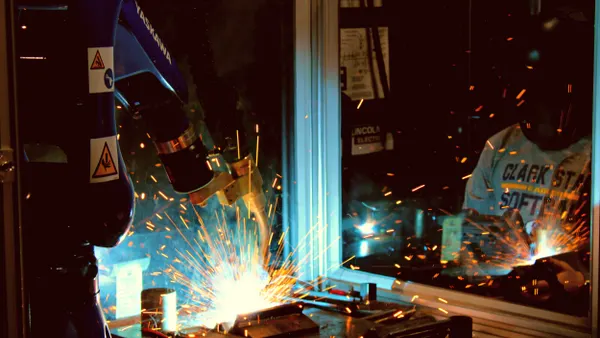Dive Brief:
- Walmart is using virtual reality (VR) skills assessments to find workers to promote to mid-level manager positions, the Wall Street Journal (WSJ) reported. The technology allows workers to be observed handling, for example, a poorly performing employee, upset customer or aisle in disarray, according to WSJ. VR assessment is normally used to assess high-skilled workers such as pilots, but Walmart is rolling the technology out to an hourly workforce, said WSJ.
- The assessment releases a color-coded report that hiring managers can use to gauge workers' strengths and weaknesses and make promotional decisions or recommendations for more training, according to WSJ. The retail giant's executives reportedly hope the technology curbs hiring bias, improves diversity and lowers turnover among Walmart's 1.5 million U.S. workers.
- Andrew Gadomski, managing director of Aspen Analytics, an HR consultancy, told WSJ that VR assessment might not capture workers' full potential without employers giving them other ways of proving their worth, such as training, work experiences or mentorships.
Dive Insight:
Nearly 90% of respondents in a Perkins Coie survey released in March predicted that VR will be as common one day as smartphones. A majority of survey respondents saw VR and augmented reality (AR) as applicable to the workforce's development, too. With the largest private employer in the U.S. adopting more uses for the technology, that prediction might be closer to being realized.
Along with adopting in VR to train its workers across the country, Walmart has recently invested in both its workforce and in its own identity as a tech-forward company. This past spring, it announced the development of a new headquarters in Arkansas with on-site perks like a fitness center and childcare center, solar panels and other sustainable design features to attract new talent. The company also introduced predictive scheduling in its My Walmart Schedule app late last year to prevent shift absences and allow workers more control over their schedules for greater work-life balance.
As employers see how technology can address a range of workplace functions, like attracting and retaining talent, engaging employees and managing performance, more may adopt these tools to achieve their goals and stay competitive. It's important for talent professionals to remember that, as HR experts have said, technology can still reflect human bias when used to assess candidate fit or performance. Understanding how implicit bias can manifest in workforce management is a start to preventing it.













